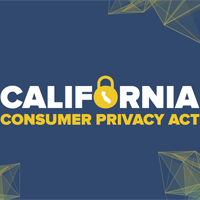 |
February 7, 2019 |
|
| |
 |
CCPA: Land of Confusion |
| Digital media is looking forward to another year of impending doom as a fresh piece of confounding privacy regulation hangs over the space. The CCPA, which will affect any company that touches the data of at least 50,000 Californians a year, is in the middle of a statewide hearing tour at the moment, and the cracks are increasingly showing in the reportedly hastily assembled piece of regulation. However, instead of screaming, "The data sky is falling!", Editorial Director Gavin Dunaway suggests we turn to an excellent blueprint for opt-in consent. Read more. |
|
 |
Massive Media Layoffs Are Further Fallout |
| There was little joy in Newsville on Friday as several major media operations announced massive layoffs. Digital-native darling BuzzFeed knocked off 15% of its staff, or around 250 jobs, while Verizon cut 7% of its media unit–800 souls from HuffPost, Yahoo and AOL. Reporters and editors took to Twitter in… Read more. |
|
 |
What is the IAB Consent Framework? |
| GDPR compliance means companies must obtain consent when collecting personal data from their website visitors. Sounds like a big headache, right? But wait, it's easier than you think. The IAB GDPR Transparency and Consent Framework is the Interactive Advertising Bureau’s solution to help publishers tell visitors what data is being collected, and how they and their vendors plan to use it—and which vendors are using it. What's more, it sends that information down the supply chain. Read more. |
|
|
|
 |
| Top Stories |
 |
|
Despite all the gloomy news and overall uncertainty, publisher revenue specialists are surprisingly upbeat. The data we collected shows that 21% of respondents who answered the 2018 AdMonsters North American Publisher Salary Survey said they were fully satisfied with their compensation while 56% said they were somewhat satisfied. The same goes for responsibilities—27% expressed full satisfaction while 52% were moderately satisfied. Overall, salaries are generally up 10%-15% across the board from the last time we compiled salary information for the 2014 Salary Survey. Read more. |
|
Third-party data can be used to fill in the gaps of your first-party data, such as qualifying leads or modeling lookalike audiences. A combination of both data types helps you engage better with your current customers, and also get your message in front of new ones. But third-party data has never had a worse reputation in terms of quality than it does now. Here are five easy ways to know you’re getting top-notch stuff. Read more. |
|
If digital media monetization was as easy as hooking up a slew of page placements to programmatic demand sources and just watching the revenue roll in, all of our lives would be far less stressful. We also probably wouldn’t have jobs. No, there is a nuance to digital media monetization—dare… Read more. |
|
|
|
 |
|
|
|